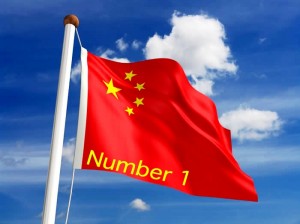General Motors and its joint ventures posted record sales in China during May, selling a total of 196,004 vehicles and surpassing GM’s sales in the U.S., where GM posted sales of 167,325 units.
GM’s operations in China were buoyed by strong demand for the Buick and Chevrolet brands and ongoing positive demand for its other brands.
GM’s sales in the first five months of the year in China reached 1,032,665 units, a 54% increase from the first five months of 2009, and a new record for the period. By contrast, through May GM has sold a total of 882,277 vehicles in the U.S.
“We are pleased with our continued strong sales, especially the performance of Chevrolet, in a highly competitive market,” said Kevin Wale, President and Managing Director of the GM China Group. “Having surpassed the 1 million sales mark for the year, we are well on our way toward record annual sales.
Sales of the Chevrolet lineup jumped 104%, Cadillac products grew 98%, and sales of Buicks rose 22% on an annual basis, Shanghai GM sales reached 83,302 units in May, increasing of 49% from May 2009.
Chevrolet was the beneficiary of strong demand for the Cruze compact sedan, which grew 113% to 14,524 units, and the Epica intermediate sedan, which grew 115% to 5,764 units. In just its fifth month on the market, the New Sail small car from Chevrolet registered sales of 7,616 units. Buick was once again led by strong demand for the Excelle lower-medium family, and new LaCrosse and New Regal upper-medium sedans, which had combined sales of about 40,000 units.
SAIC-GM-Wuling sales in May rose 5% to 105,395 units. Demand for its Wuling products surpassed 100,000 units for the fourth month this year. Its most popular model remained the Wuling Sunshine minivan, which generated sales of 56,989 units.
Demand for FAW-GM products totaled 6,773 units in the joint venture’s first May reporting sales. Opel, GM’s import brand from Germany, enjoyed resurgence in demand of 214% in May.



Can’t count joint venture sales as full units, besides Buick will come back stateside and remind the Han where it all started.
While this may be true we’re comparing apples and oranges. GMs US sales include fleet and China’s “sales” figures are deliveries to dealers and not actual sales to consumers.
Ian, perhaps apples-and-oranges, but while your point is valid, it’s also ignoring the longer point of view. Recall it was just a bit more than a decade ago that former GM CEO Jack Smith made the seemingly risky decision to put an assembly plant in Shanghai. At the time, an automobile was a rare sight, even in the biggest Chinese cities. Today, depending on which numbers you count, China is either the world’s largest auto market or about to be. And even if GM’s overall U.S. sales may still be larger, one can only wonder for how long.
A year ago, I asked now-retired Vice Chairman Bob Lutz about the potential impact of shifting sales on the way GM was being run. He made it clear that while North America might always remain the company’s core, it will have to pay more and more attention to what happens in the rest of the world. The fact that Buick is now selling more than four times more product in China v the U.S. is a great example. PATEK, the design and engineering center in Shanghai, is increasingly dominating Buick product development. The good news is that picky Chinese consumers have actually forced the brand to build a better product, as the LaCrosse illustrates.
Paul A. Eisenstein
Publisher, TheDetroitBureau.com
Well, good point of view, Jim, but Chinese industrial policy requires JVs to operate there. Buick is showing signs of life, but U.S. sales through May are but 56,899, roughly 9,000 units below Pontiac at this time last year when GM was in bankruptcy for the entire period. – editor
This should not be a surprise and is in fact inevitable in a country with the fastest growing middle class and the disposable dollars that go with it. Plus, China overtook the U.S. last year as the largest car market in the world and their are no signs that trend will reverse. China is a large, still young and growing market while the U.S. has become a very mature auto market with ups & downs almost totally determined by the economy. I’d say get use to this because this gap is likely only to grow wider and it is one reason that there is no auto maker on the planet who is not expanding as quickly as possible in the Chinese market right now. Just check Toyota, Ford, Mercedes, VW expansion there.
It all sound good until the Chinese government decides the JVs have gotten to the point they don’t need GM.
Already happening… – editor